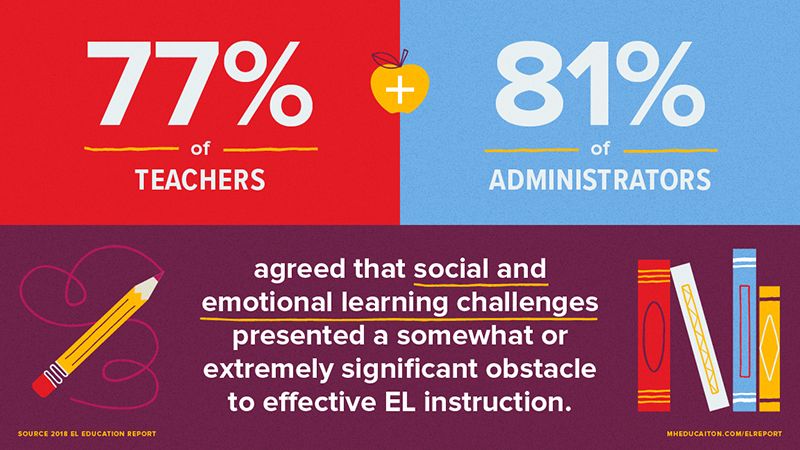Log In to My PreK-12 Platform
Our Second Annual English Learners Report Shows a Need for Social and Emotional Supports
Heath Morrison's review of the 2019 English Learner's Report

When we released our first English Learners Report in 2017, educators cited professional development as a key gap in supporting English learners (ELs). In our new report, the outlook on professional development has improved: seven out of 10 teachers agree that their school or district provides sufficient, ongoing professional development to support ELs’ success, an increase from 55 percent the year before. 76 percent agreed this year that the training provided by their school or district improves their ability to teach English Learners. The majority of educators also reported that they have seen an increase in the amount of EL resources available to support their instruction.
Given the increasing attention paid to teacher preparation and instructional resources, it’s clear that administrators recognize the presence of these students in their communities as well as their unique challenges and experiences. We’re heading in the right direction in giving English learners the education they deserve, but we still have room to grow.
According to the results of this year’s survey, social and emotional learning (SEL) is the appropriate place to start. 77 percent of teachers and 81 percent of administrators agreed that social and emotional learning challenges presented a somewhat or extremely significant obstacle to effective EL instruction.
Much like academic instruction, social and emotional instruction should not look the same for every student. It should be differentiated to student needs, relevant to student lives, and culturally responsive. What we know about effective social and emotional instruction has exponentially increased in the past few years – and thanks to monumental research efforts like the Aspen Institute’s recent report, we know that SEL should be integrated into academic learning, explicitly taught, informed by learning science, and engage all stakeholders at every level.
All of these principles apply for English learners. But cultural nuances, national conversations about immigration, linguistic differences, and traumatic experiences they may have already encountered – such as with migration or xenophobia – complicate the SEL supports many ELs may require.
Many empathetic, intuitive, and dedicated educators have already begun to practice SEL approaches suitable to support EL needs. Trauma-informed practices, which can be implemented school-wide to account for unknown traumas, are gaining traction as educators begin to understand how trauma can impact a student’s experience in the classroom. Strengths-based approaches encourage educators to view behavioral or cultural differences through a positive lens and consider how these characteristics could be an asset. Our team recently had the opportunity to sit down with an educator who has led efforts to implement trauma-informed practices in her school, where a high population of English learners, some of whom are newcomers, required specialized SEL supports to succeed even academically.
The future of education for English learners is bright. As we collectively continue to identify their unique needs, prioritize research efforts that identify effective supports, and view their successes through a multi-faceted lens that includes social and emotional well-being, it is sure to look even brighter.
For a full look at the McGraw-Hill English Learners Report, see: www.mheducation.com/ELreport
This article was originally published on Heath Morrison's LinkedIn.